This is the fourth bi-annual newsletter for the EERA Joint Programme on Wind Energy (EERA JP Wind) after EERA JP Wind has successfully acquired the EU funded IRPWind project.
Feel free to distribute the newsletter among your colleagues and friends!

1. Introduction by the coordinator of the EERA JP Wind
Dear colleagues, dear friends of IRPWind
Welcome to this 4th IRPWind newsletter. We have now been well under way with the integrated research programme for wind energy for 1 year and 9 months. The essence of IRPWIND is to take important steps towards further integration, alignment and coordination of research activities in Europe. IRPWind is designed to take the work done in the EERA Joint Programme on Wind Energy to the next level towards creating a European Integrated Research Programme on wind energy.
We are now over 40 members in EERA JP WIND and more institutions are continuously showing interest in the programme. I’m delighted that our Joint Programme and IRPWind are attracting new partners in the European R&D landscape for wind energy, but this interest also gives us some challenges in terms of coordination and collaboration. Joint planning is paramount for JP WIND and external funding is the vehicle for much of our work. However, keeping in mind the number of participants, we are now actively involved in EERA JP WIND and IRPWind, it is more important than ever to have ongoing activities in our community vis-à-vis the EU funded projects. It is a challenging but achievable task.
A new call for the IRPWind mobility programme opens in January 2016. There is no doubt about the interest for the programme as we are receiving an increasing number of questions about rules and procedure for participation. We have tried to make the mobility programme as flexible as possible and I encourage all interested fellow IRPWIND and EERA JP WIND participants to make use of this non-bureaucratic mobility programme.
´Watch this video and get inspired to join the programme.
I will also like to inform you about an upcoming call for joint experiments under the work package for Research Infrastructures. Subjects for the call for experiments will be research wind turbines, wind tunnels and grid integration. The call will be open to all EERA JP WIND members and will be issued no later than February 2016. The call is supported by the criteria in the document on “Rules & Conditions for joint experiments” elaborated in the IRPWIND work package on Research Infrastructure. I have high expectations for this.
Finally I would like to wish you all a Merry Christmas and a Happy New Year.
Peter Hauge Madsen, IRPWind Coordinator - DTU
Wind Energy

2. EERA JP Wind news
The WindScanner.eu project came to an end in September 2015. All members of the WindScanner.eu Steering Committee have signed a Memorandum of Understanding (MoU). The signatory event took place at the opening ceremony of the IRPWind conference in Amsterdam on the 28th of September.
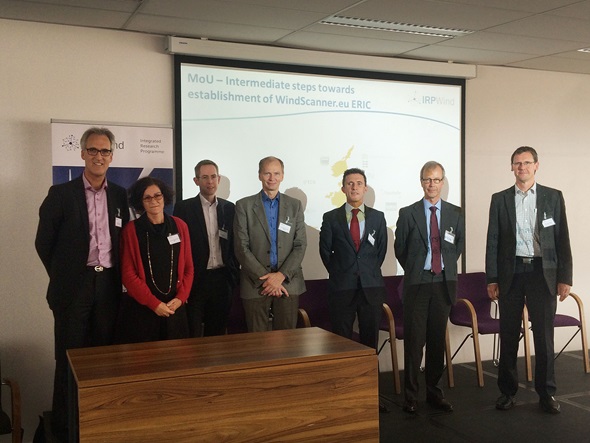
Left to right: Peter Eecen – ECN, Teresa Simões Esteves - LNEG, Stephan Barth - ForWind Oldenburg,
John Olav Tande – Sintef, Antonio Ugarte Olarreaga – CENER, Peter Hauge Madsen – DTU Wind Energy,
Bernhard Lange - IWES Fraunhofer.
The MoU is not legally binding but is a means of showing commitment to the continued efforts after the end of the Preparatory Phase project in the intermediate phase from 1 October 2015 towards implementation. At the point of finalization of the Preparatory Phase sufficient national funding has not been achieved in order to start the establishment of a WindScanner.eu European Research Infrastructure Consortium.
The establishing of the ERIC is expected to happen early 2017.
Intermediate steps have been agreed upon in order not to lose momentum in the interim phase between the finalization of the Preparatory Phase and the establishment of the ERIC. The partners have agreed on a framework for involvement of the scientific and industrial community based on the already established EERA Joint Programme (JP) on Wind Energy, where all the present partners are members. Utilizing the EERA framework will not only provide a familiar and proven effective governance structure, but it will also serve as a way of expanding the number of partners involved among the more than 40 members in the EERA JP Wind from currently 13 different Member States.
The interim phase can be seen as having two phases starting with a phase based on voluntary collaboration in the framework of EERA. This will next be supplemented by a more targeted “Implementation Phase” focusing on the final steps towards establishing an ERIC and gradually starting specific hub activities.

KIC InnoEnergy’s Call for Innovation Projects - Open from 15 Jan - 4 April 
KIC InnoEnergy is looking for companies with innovative solutions in sustainable energy.
Do you have a business idea linked to Sustainable Energy?
Do you have a proven concept that you want to commercialise?
Do you now need complementary business and financing support?
If so, our 2016 Call for Innovation Proposals initiative is for you. Submissions for proposals will open between 15 January and 4 April. To prepare, we encourage you to review the documents for our previous call for innovation here. If you would like to be notified about updates regarding the Call for Innovation Proposals process, please submit your details here.
Antoni Martínez – KIC InnoEnergy

3. EERA JP Wind Sub-Programme (SP) news
The Joint Programme Wind Energy is subdivided into 7 sub-programmes.
Highlights of Avatar & INNWIND.EU Side event at EWEA 2015 Paris
The side event presenting European Union framework projects Avatar and INNWIND.EU workshop, was one of the highlights of EWEA 2015 in Paris. During the event, the main results and the lesson learned from two projects were shared with more than 50 participants from industry, research institutes and universities around the world.
In the INNWIND.EU project, a reference 10MW wind turbine is designed in order to compare the innovations with a reference that is designed with the current state of the art methods and tools. As a result of many investigations in new rotor concepts and innovative ideas in order to reach lighter rotor design for 10MW+ turbines, it has been stated that “You have to be tough in order to design it soft and include innovations”. In addition to these, investigations of the innovative direct drive generators showed that they could lower the cost of energy of a 10MW turbine from 2 to 4 percent.
|
In the Avatar project, limits and the challenges in the aerodynamic modelling of the 10MW+ wind turbine are investigated such as high Reynolds number flows, transition modelling, modelling the thick airfoils, compressibility effects, active and passive flow devices.
As part of the project, several experiments are carried out to improve the aerodynamic design tools for 10MW+ wind turbines.
|
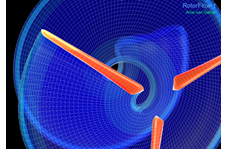 |
An aerodynamically challenging 10MW rotor is designed for the Innwind wind turbine with the purpose of studying the challenges and improvements in the aerodynamic design tools. The design of this challenging rotor was explained during the workshop.
In addition to this, the results of a blind test campaign were presented. A wind turbine blade airfoil is tested in DNW-HDG pressurized wind tunnel from 3 to 15 million Reynolds numbers which is the actual operating condition of a 10MW wind turbine blade. The results were put in a blind test comparisons where several participants send predictions using their CFD tools. It was the first time that these results were shown to the outside world. Influences of the Reynolds number effects to the new generation blade/airfoil designs were discussed together with the next steps in the aerodynamic modelling in wind energy.
In general, it was observed that both projects were feeding each other very well in terms of results and developments. The EU officer highlighted that they hope to see the results of these projects will be implemented by the industry in order to reach the targets in 2020 and further.
Ozlem Ceyhan – Yilmaz - ECN

Sub-programme 6 - Structural design and materials
Within the EERA JP Wind SP Structures and Materials the round robin on identification of damages on metallic materials (bearings) for wind turbines has been successfully completed with the coordination of University of Aachen (IME-Aachen) and the participation of DTU, TU-Delft, BERA (U-Gent, Laborelec). The findings of each partner on the fatigued parts have been discussed between the partners in a Workshop organized by IME-Aachen on the 29th of September 2015. It was decided that these will be published through a joint research paper.
In parallel, within the EERA JP Wind/IRPWind conference the workshop on SP Structures and Materials, EERA partners presented recent research results and discussed on future potential research project proposals on coatings for blades. Subjects covered included blade design and testing, wind tunnel testing of scaled wind turbines, damage detection of offshore wind turbine foundations and blades and accelerating aging of composite materials.
The audience was also informed on recent developments within large European research projects such as INNWIND.EU and IRPWind.
Denja Lekou - CRES

4. IRPWind news
IRPWind’s work package on “Infrastructure” has the general objective of raising and optimizing the use of EU RI facilities, improving efficiency and synergy by sharing and networking among Member States (MS). Initially, it will be promoted the alignment of MS research activities through joint experiments carried out in EU-RI. These experiments will be stimulated and coordinated from the WP3 along the IRPWind project.
Now, the call for the first joint experiments will be opened.
− Subjects for experiments: Research Wind Turbines / Wind Tunnels / Grid Integration
− The call will be open to all EERA JP Wind members
− The call will be issued no later than February 2016
− The proposals (EoIs) will be reviewed and evaluated by the Network coordinator and approved by the Technical Committee.
− The call is supported by the criteria in the document on “Rules & Conditions for joint experiments” elaborated in WP 3
− An indicative budget for each experiment is 150.000 €
For more detailed information on the criteria, please contact Antonio Ugarte Olearreaga.
Antonio Ugarte Olarreaga - CENER

On September 28h and 29th, the second edition of the IRPWind conference took place in Amsterdam. 155 registrations, 60 presenters, 15 posters, representatives from national programmes, industry and the research community. Work in all 7 sub-programmes of Joint Programme Wind were presented, interspersed by plenary sessions and IRPWind project meetings.
Some take away’s from the conference are that Europe still leads the way in wind research, but has to fight to consolidate that position. Integration of activities is key in this. The topics of data sharing and reducing costs of energy to serve society were underlined by the various industrial speakers and attendees.
Cooperation between the research community and industry, both on short term and long term topics is essential in this. Not only the European Commission, but also the National Programmes facilitate in supporting these efforts.
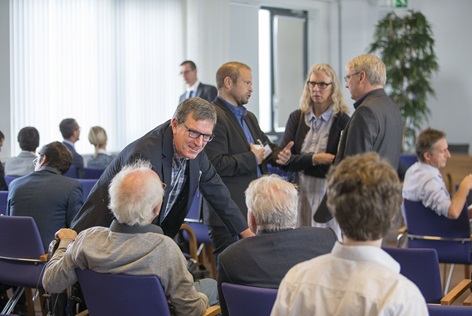
Picture from the IRPWind conference
A survey was send around after the conference with a very satisfying 87 reactions, of which 66 bothered to answer the open questions. The gathered information is priceless to the organization, so thank you once more for your time. Hope to see you all again in Amsterdam for the next edition on the 19th and 20th of September 2016. All presentations and posters have been made available to the attendees on the IRPWind website.
Martijn van Roermund – ECN

|
To facilitate flow of knowledge, share lessons learned, best practices and standard documents, EERA JP Wind is setting up a network of Technology Transfer Experts under the IRPWind project. A total of 25 TTEs from the different institutes are joining in. Not only will institutes build on each other’s knowledge of the afore mentioned topics, new markets will be jointly identified and approached.
Furthermore, the network will be part of a greater initiative called the “online wind energy research network”, which will also host a market place where EERA JP Wind members can display their technology and industry can visit. Other potential applications can include a discussion board for development of research proposals and RI/industry consortia.
A first version of the network should be online beginning of Q2 of 2016. Progress will be presented in the next newsletter.
Martijn van Roermund - ECN
|
 |

Having a very high industry-density, the EWEA annual event 2015 in Paris was targeted to organize a dissemination event. This was done in the form of combined presentations by EERA DTOC and IRPWind representatives. The goal of the side event was to provide the industry with concrete, ready to apply results of the DTOC project and the first results and goals of the IRPWind programme. Around 30 people attended the event.
Through several presentations followed by discussions, the audience gained insight into the strategic optimization software “Wind&Economy” developed under the EERA DTOC project. Furthermore, the concept of open access to data was presented by DTU, a topic that proved to remain hot. A solid, short term business case for the data-sharer and a clear application-need for the data-requester will help break the ice. And should we really demand open access? Or is limited access sufficient?
In the third presentation, light was shed on how forecasting of the energy supply market will develop. More precise forecasting will support market participation, wind turbine control strategies and influence the required efforts on integration. The research community is working hard on this under the IRPWind project.
Lastly, the research community presented how it can support the industry in their R&D efforts. Not only does the research community provide knowledge and experience. It can help write effective proposals, co-finance the R&D effort through shared research and provide access to available data.
EERA JP Wind aims to present at specific wind related events next year, to further increase the impact of the results from the European research projects.
All presentations are made available on the IRPWind website.
Edit Lulu Nielsen – EWEA
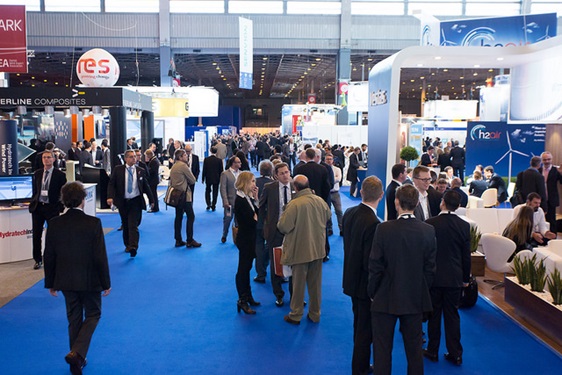
Picture from EWEA 2015 in Paris, Picture: ewea.org

All EERA partner organizations can apply - deadline 31 January 2016
The 4th mobility call is open. The requirements to participate have changed significantly. Also the duration has become more flexible.
Eligibility criteria
The call will now be open to researchers employed at all EERA participant organizations. This follows the recent approval by the Commission of the Special Clause 42 allowing giving financial support to third Parties.
Mobility schemes
1 to 4 weeks for IRP Wind and EERA Managers.
The purpose of this scheme is to stimulate the mobility of managers in the EERA organizations to meet and discuss for laying down strategic action plans and other collaborative efforts. A sum of 161 Euro/day will be granted to successful applicants.
4 to 26 weeks for all scientists
The purpose of this scheme is to increase flexibility in the choice of the grant duration as requested by EERA researchers during discussions during the IRPWind general assemblies.
An amount of 105 Euro/day will be granted to successful applicants
For both schemes the financial rules remain unchanged:
− Travel expenses and an advanced payment of 70% of the total grant will be issued immediately.
− The remainder of the grant will be issued after the approval of the final report.
− Travel expenses from/ to home Organization will be a lump sum of 600 Euros.
More information will be posted on the IRPWind mobility webpage.
Would you like to know what the mobility experience is like? Check out this new video from one of the applicants and get inspired!
Anna Maria Sempreviva, DTU
Claudia Calidonna, CNR
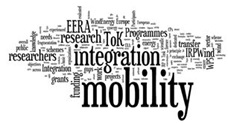

Partners of WP7 of the IRPWind projects are at the final stage of preparation the experiments that will be performed early next year on blade parts (WP7.1, WP7.5) and scaled offshore support components (WP7.2).
Collaboration between DTU, IWES, CRES, CENER, WMC and ForWind on these preparations is at a peak to assure successful experiments. First results obtained within the WP7 work packages have been presented in July 2015 during the ICCM20 conference by CRES (WP7.4), within the IRPWIND/EERA conference in September 2015 by IWES (WP7.5, WP7.1) and WMC (WP7.3), while during EWEA 2015 conference November 2015 a joint paper by CRES and IWES was presented (WP7.4, WP7.3). You can find the poster through this link.
Denja Lekou - CRES

5. Suggestions and feedback?
If you have any topic suggestions for the next newsletter, or if you have ideas on how to improve it, feel free to send your input to Martijn van Roermund.
You can subscribe and unsubscribe to the newsletter here.
